Éric Tabarly – His Yachts
Three of the Pen Duick yachts were built in the Perrière shipyards in Lorient: Pen Duick III the schooner, Pen Duick IV the trimaran and the first large multihull (which would become Manureva) and Pen Duick V, a 10.70m monohull, the precursor of today’s 60’ monohulls (such as the Vendée Globe yachts).
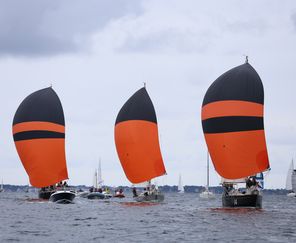
home port
5 Pen Duick yachts
are still sailing
On view at the pontoon at
the Cité de la Voile
during a stopover
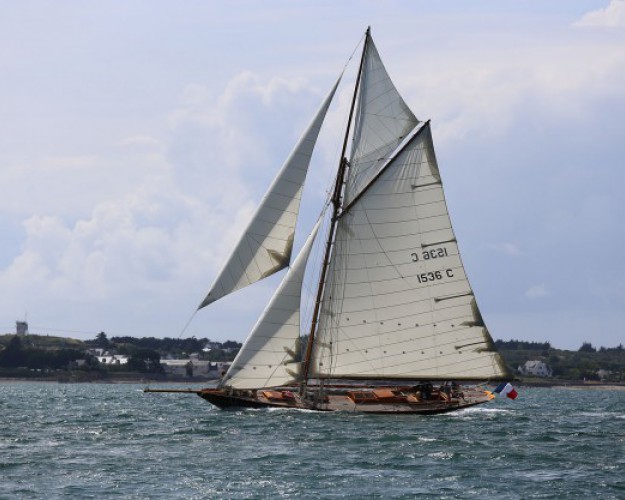
Pen Duick
Éric Tabarly's first sailing boat
A 15m auric cutter designed in 1898 by the Scottish architect W.Fife III, Jr. and built in Ireland under the name of Yum. Guy Tabarly, Eric’s father, purchased her in 1938 and the family sailed on board until 1947, when she required extensive work. Éric Tabarly purchases her from his father in 1952, virtually a wreck. He would save her by laminating a mould of her hull with a polyester resin, a first at the time for a hull of its size. From 1959 to 1962, he completed numerous sailing tours and regattas aboard Pen Duick. She was restored once again between 1983 and 1989 by the R Labbé shipyard. It was aboard this boat that Éric Tabarly disappeared at sea during the night of the 12th of June 1998 off the coast of Wales.
Architect: William Fife III junior, Scottish architect
Shipyard: Gridiron and Workers in Carigaloe near Crosshaven, Ireland
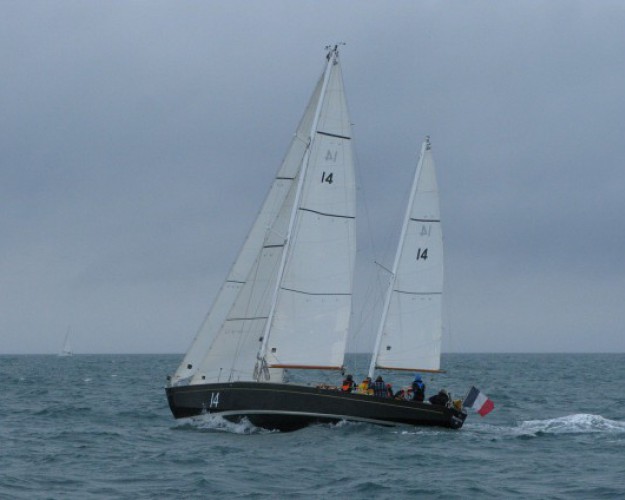
Pen Duick II
The Transat Bakerley 1964
This is the first yacht that Eric Tabarly designed specifically for a race: the 2nd edition of the English solo Trans-Atlantic in 1964.
A plan by G. Costantini conceived in his shipyard in Saint-Philibert. Éric Tabarly won the race in 27 days ahead of F. Chichester, the winner of the previous edition. Pen Duick II then received two new riggings to improve performances when sailing with a crew and light winds and to be more competitive in the CCA in America. The yacht was sold to the National Sailing School in Quiberon in 1967. Pen Duick II helped Éric Tabarly accumulate considerable experience in just two years and served as a design basis for the Pen Duick III. She was partly built in 1994 at the Pichavant shipyard. She now sails from the ENV (National School of Sailing).
Architect: Gilles Costantini and Éric Tabarly
Shipyard: Costantini in Saint-Philibert
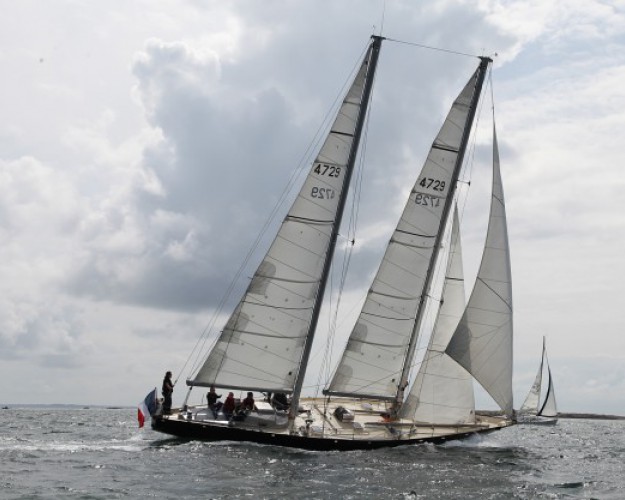
Pen Duick III
the largest aluminium hull
Éric Tabarly’s Pen Duick III has received the most racing awards. An extrapolation of Pen Duick II, designed for the solo Trans-Atlantic race in 1968, but also for crewed races.
The year of its launch in 1967, Tabarly became the RORC champion by winning all the races in which he participated. A progression of Pen Duick II, constructed in aluminium and whose hull and keel were tested in a towing tank. It was a first for its time as were the sponsorships deals required to achieve the construction budget. Since then, she continues to ride the seas of the world, crewed or solo; the Vendée Globe Trans-Atlantic, the Whitbread, the Route du Rhum and the
Trans-Atlantic Lorient-Saint-Barthélemy-Lorient. In 2000, Pen Duick III joined the Pen Duick Cruising Club under the management of Arnaud Dhallenne.
Architect: Éric Tabarly and the Perrière shipyard
Shipyard: Chantiers et Ateliers de la Perrière in Lorient
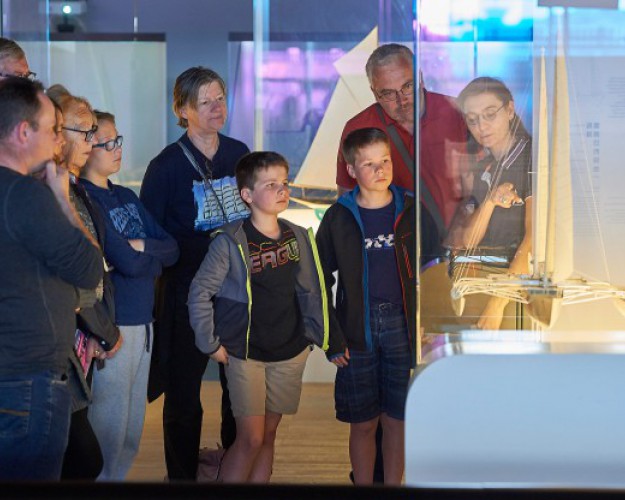
Pen Duick IV
the first racing trimaran
A revolutionary trimaran in 1968 but unfortunately was not launched in time to conduct her final adjustments before the Transat due to the events of May 1968.
André Allègre and the Perrière shipyards designed an extremely light 20m yacht destined for the high seas. Built in aluminium, it incorporated many innovative features: pivoting masts with a ketch rig and fully battened mainsails, connecting arms in aluminium tubes joining symmetric floats to the central hull. A collision and autopilot problems meant that the Pen Duick IV failed to finish the Transat in 1968 but went on to win it in 1972 with Alain Colas. Manureva (its new name) disappeared during the 1st Route du Rhum with Alain Colas the 16th of November 1978.
Architect: André Allègre and the Perrière shipyard
Shipyard: Chantiers et Ateliers de la Perrière in Lorient
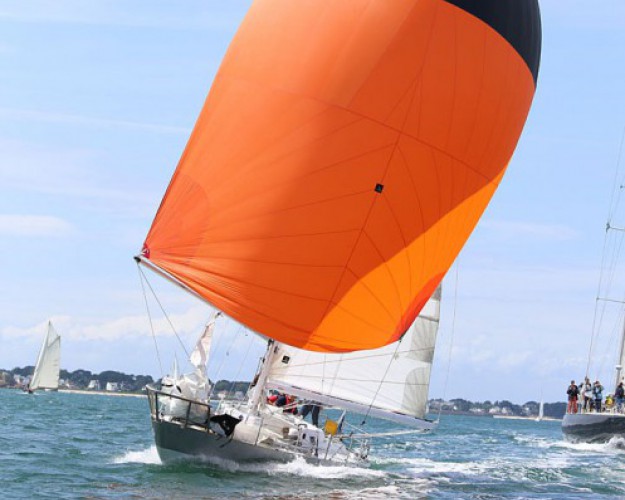
Pen Duick V
thes first ocean racing yacht to feature ballast thanks
A 35’ prototype specially designed for the solo race in 1969: The Trans-Pacific San Francisco to Tokyo organised by the Slocum Society.
Pen Duick V was the precursor for current 60’ monohulls with her ballasts, deep and fine keel, her minimised rake and broad rear lines. The gliding hull featured the same redan style as motorboats. Éric Tabarly brilliantly won the race in 39 days and 15 hours, 11 days ahead of his nearest rival. The yacht was financed by the Port of St. Raphael who put her up for sale after the race.
Architect: Michel Bigoin, Daniel Duvergie and the Perrière shipyard
Shipyard: Chantiers et Ateliers de la Perrière in Lorient
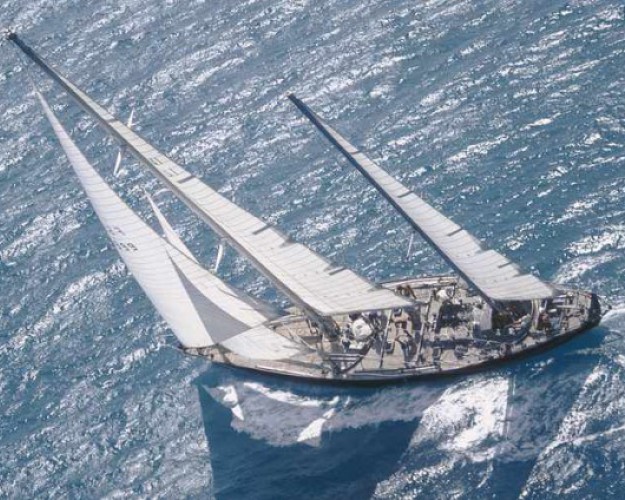
Pen Duick VI
The solo Trans-Atlantic 1976
Éric Tabarly’s first Class 1, he had a soft spot for this yacht designed especially for the first round the world race, the Whitbread 1973-1974. Pen Duick VI had to be built in record time by the naval shipyard in Brest to make it to the starting line. All his chances of winning were, however, ruined by two dismastings during the 1st and 3rd legs. In 1974, the Bermuda - Plymouth was the first of many races that would be won by the ketch, in 1976, the Atlantic Triangle and the solo Trans-Atlantic in June. This race is undoubtedly the hardest Eric Tabarly ever participated in, confronting five consecutive storms aboard a yacht designed for a crew of 14, without autopilot (broke down four days after the start). The grand maxi would set off again in 1981 for the race around the world under the name of Euromarché. She finished 5th out of 27 although surpassed by her competitors. In the 21st century, Pen Duick VI continues to ride the world’s oceans as part of an educational sailing programme visiting Iceland, Greenland, the Caribbean, Patagonia, Antarctica.
Architect: André Mauric
Shipyard: Naval Shipyard Brest
